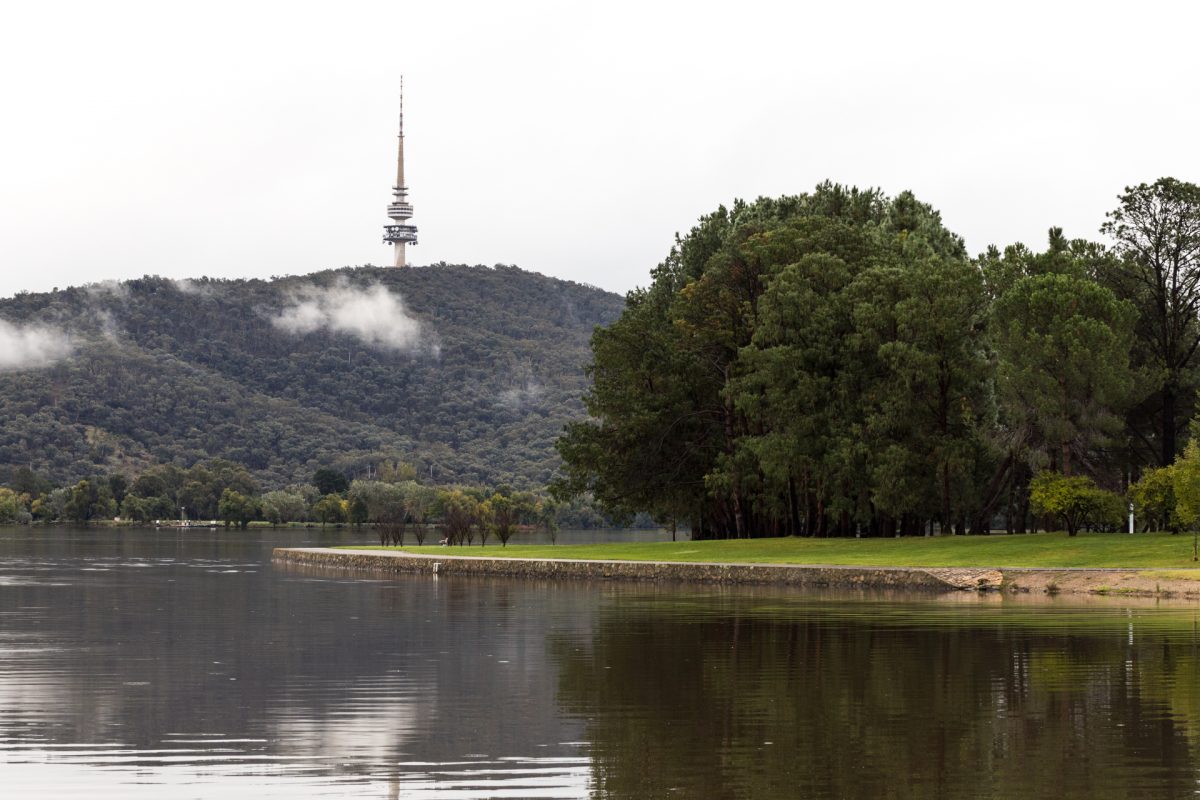
Canberra’s artificial lakes contribute a great deal to its biodiversity. Photo: Michelle Kroll.
For most, the term “wetlands” evokes images of long-legged fowls loping through natural waters, surrounded by reeds and abundant insects. In reality, anything from an artificial lake to the miniature swamps that rise up from the ground in wet weather, can be classified as wetlands.
And while often viewed as quite dry, Canberra is in fact covered in them. They’re essential to the environment and, in some circles, to our global standing.
University of Canberra researcher and conservationist Professor Peter Bridgewater has spent most of his academic and professional career focused on wetlands, which he says play a more important role in sequestering carbon than forests.
He says Canberra should explore the possibility of becoming an “International Wetland City” under the Ramsar Convention on Wetlands.
In 1974 Australia became the first country not only to sign, but to ratify the Ramsar Convention, designating the Northern Territory’s Couburg Peninsula as the first “Wetland of International Importance”. The nation has since been an important player in how the Convention has evolved to better recognise the diversity of wetlands.
“When people think of wetlands they think of Kakadu, Couburg and other large areas of natural wetlands but actually, the most important functioning wetlands are in urban areas – and increasingly so as the world urbanises,” Prof Bridgewater says.
“So the Convention came up with the International Wetland City title, an international accolade designed to encourage countries to nominate cities with substantial wetlands. The idea was to enhance conservation and management and to raise the local population’s awareness of the important role it could play in looking after wetlands.”

Professor Peter Bridgewater thinks Canberra could be a strong candidate as an International Wetland City. Photo: Michelle Kroll.
Currently the country with the most International Wetland Cities is China – a case study ideally positioned to make the point.
“This is a heavily urbanised country, and its government has identified the International Wetland City label as a good way to get the local population to recognise their role in looking after these valuable assets. Don’t pollute, don’t let your dogs chase wildlife, behave in an environmentally responsible way, etc,” he says.
“This also helps spotlight something called ‘micro-wetlands’ – which we have in abundance in Canberra. These small patches of wetlands aren’t even always wet, but are important in managing water flow, preventing floods and conserving water in dry times.”
In the ACT, the environmental significance of created wetlands – from the ponds in Mawson and Dickson to Lake Burley Griffin – cannot be overstated.
In cities, the biggest challenge to maintaining the health of these waterways is managing pollutants that run off roads, get into drains and contribute to problems such as blue-green algae.
“There is a lot of research happening on urban wetlands and good work is being done, but we need more ways to bring this to the public attention,” Prof Bridgewater says.
Awareness of the importance of wetlands across Canberra varies. The significance of the Jerrabomberra wetlands, built along the flood plains of the Molonglo River, is relatively well known, given its status as a base for the annual migration of the Latham’s Snipe between Australia and Japan.
But precious few are considered for their environmental contributions.
“You see obvious wetlands that are wet all the time. Most are artificial lakes in town centres like Tuggeranong, Belconnen and Gungahlin, and those built along creek lines to help manage water flow. The fact that they’re artificial doesn’t take away from the fact that they support biodiversity,” Prof Bridgewater says.
“But the same goes for the micro-wetlands that pop up when it rains a lot. On designated reserve hills you find little suspended wetlands that come to life when the water level reaches a certain point and breaks the surface, like a small spring. It’s more like seepage, but plants and animals that have been inert in the soil burst into life, and form an integral part of the ecosystem.
“They’re like stepping stones around the landscape for plants and animals – and if one dries up, there’s always somewhere that’s wet. It’s a critical part of the landscape matrix of Canberra as a city.”
The Wetland City Accreditation scheme has now resulted in a total of 43 cities in 17 countries recognised by the Ramsar Convention – and Canberra ought to look to the Federal Government to make a nomination. But there will be some work to do first.
“I see Canberra as a really good candidate for International Wetlands City accreditation, but if we want to submit our wetlands of importance for the independent committee to evaluate, we need to develop a long-term plan,” Prof Bridgewater says.
“Where are we going with our wetlands system? How can we better manage these important resources?”





















